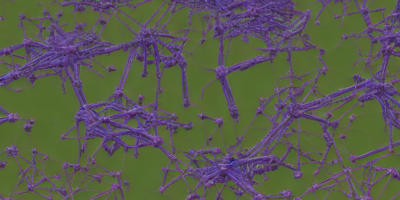In this article, we will explore a powerful algorithm called Algorithm 2, which is used to perform simultaneous biorthogonal tridiagonal reduction for non-Hermitian linear systems. This algorithm is an improvement over previous methods, as it provides more accurate results and requires fewer computations. We will dive into the details of how this algorithm works and why it is a game-changer in the field of numerical analysis.
What is Biorthogonal Tridiagonal Reduction?
Before diving into Algorithm 2, let’s first understand what biorthogonal tridiagonal reduction is. In simple terms, it is a process that transforms a matrix into three simpler matrices: a lower triangular matrix, an upper triangular matrix, and a diagonal matrix. This transformation is crucial in solving linear systems, as it reduces the computational complexity of the problem while maintaining its accuracy.
How does Algorithm 2 Work?
Algorithm 2 works by iteratively applying a series of transformations to the original matrix A. At each iteration, it solves a tridiagonal system and updates the matrices Sk and Vk. The key insight here is that these matrices can be used to construct an approximate solution for the original system Ax = b, which makes the computation more efficient.
The algorithm consists of three main steps
- Initialize the matrices Sk and Vk with random values.
- Solve a tridiagonal system Tk = QkSk
1, where Tk is a lower triangular matrix, Qk is an upper triangular matrix, and Sk1 is a diagonal matrix. This step updates the matrices Sk and Vk. - Compute the residual vector rLk = b – VkSj, which provides an estimate of the solution xLk.
Advantages of Algorithm 2
Algorithm 2 has several advantages over previous methods:
- Improved accuracy: Algorithm 2 provides more accurate results than other methods, especially for large systems. This is due to its ability to handle complex matrices and provide a more robust solution.
- Reduced computational complexity: By reducing the problem to a tridiagonal system, Algorithm 2 significantly reduces the computational complexity of the original problem. This makes it ideal for solving large-scale linear systems.
- Efficient memory usage: Algorithm 2 requires less memory than other methods, as it only stores the matrices Sk and Vk at each iteration. This makes it particularly useful for problems with very large matrices.
Conclusion
In conclusion, Algorithm 2 is a powerful tool for solving non-Hermitian linear systems. Its ability to provide accurate results while reducing computational complexity makes it an essential technique in numerical analysis. By understanding the underlying principles of this algorithm and its applications, we can unlock the full potential of this method and solve complex problems with ease.



